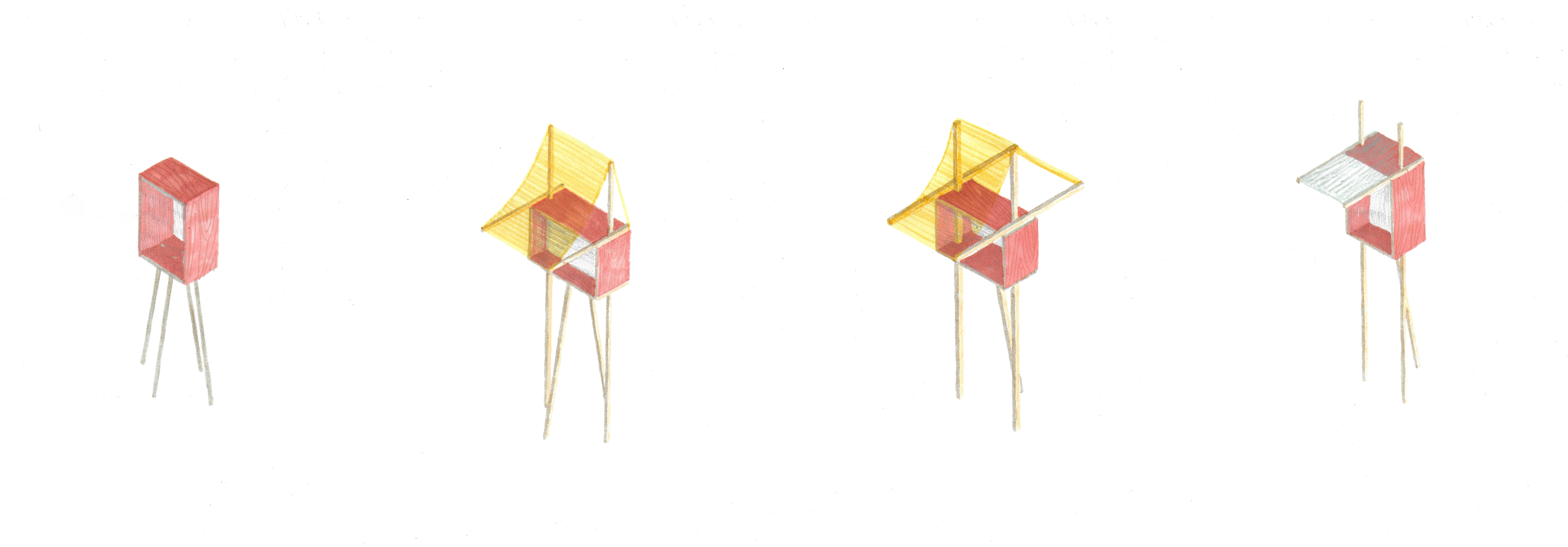With a long history of mostly top-down urban planning behind us, most people still take the urban space as it is. They believe it is something out of their control and therefore it becomes something out of their scope. So how can we help citizens to look at their own street with fresh eyes?
In collaboration with LVR, I’ve developed a placemaking tool that helps people to co-design tactical interventions for a particular part of the public space. Because we believe that change starts by taking a different perspective, we have called it Camera Futura. Inspired by the looks of antique wet plate cameras, it is an intuitive instrument that attracts people to open their imagination and start conversations.
Locals are invited to draw their vision for the space in low fidelity on a transparent sheet of (reusable) plastic film. Afterwards, they can comment on the designs of others. The drawings are then hung in neighbouring shops to continue the conversation.
We tested the device with the students of the design school of Saint Luc in Molenbeek, looking at several dead street corners.









